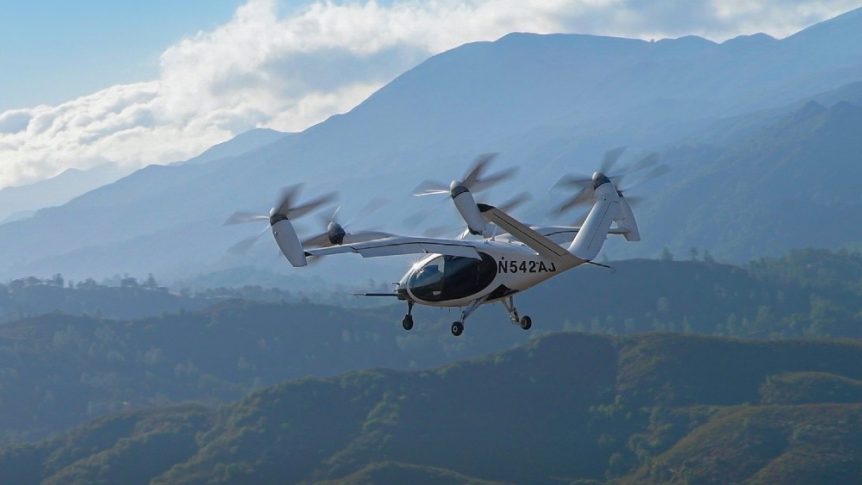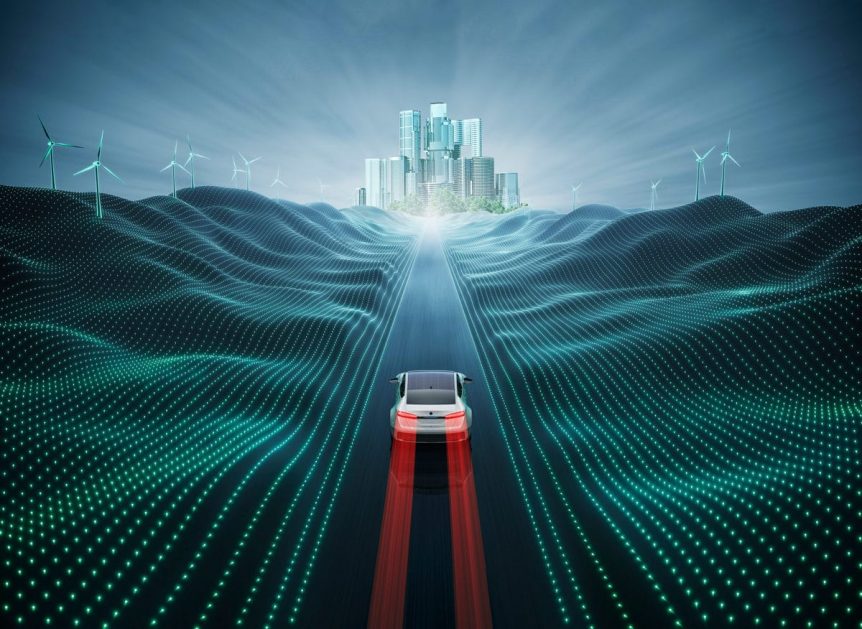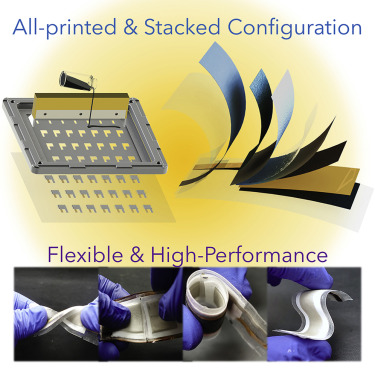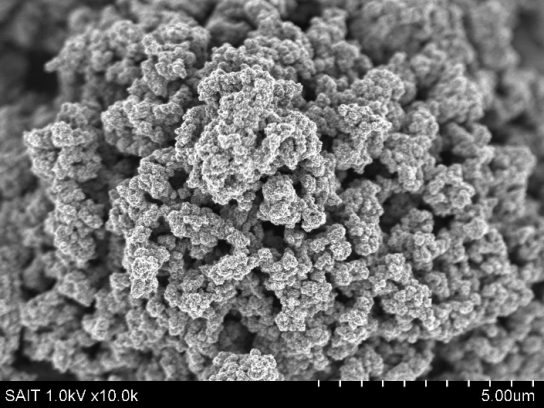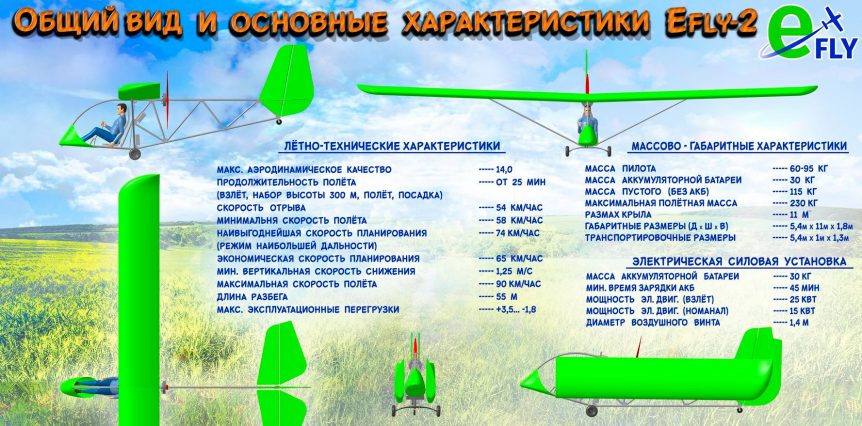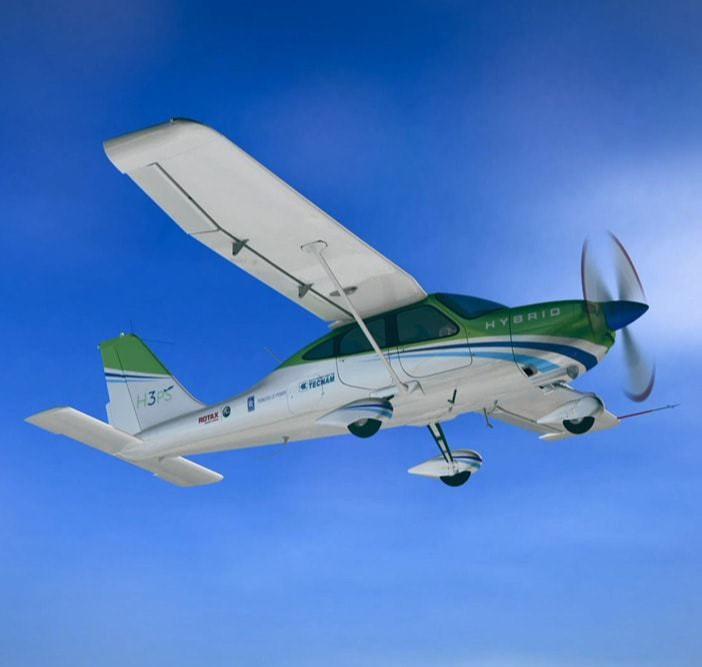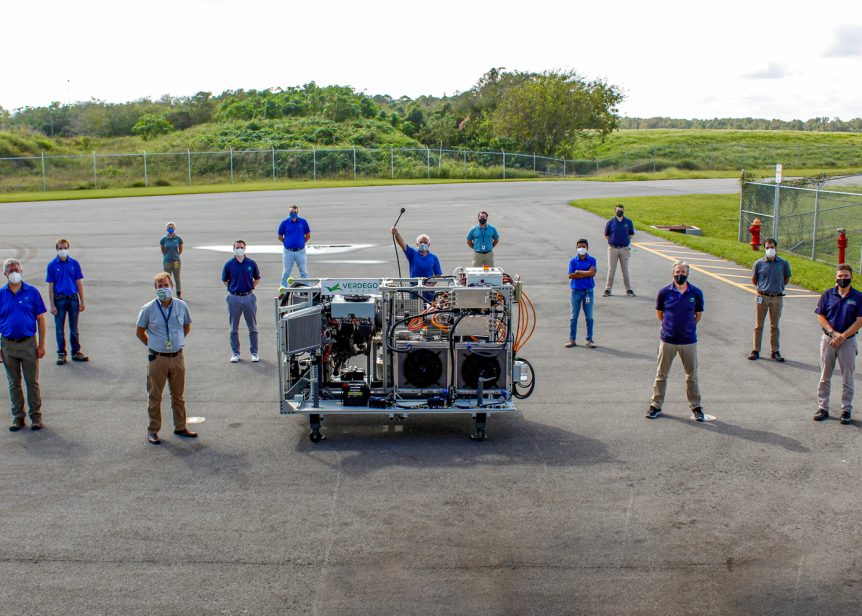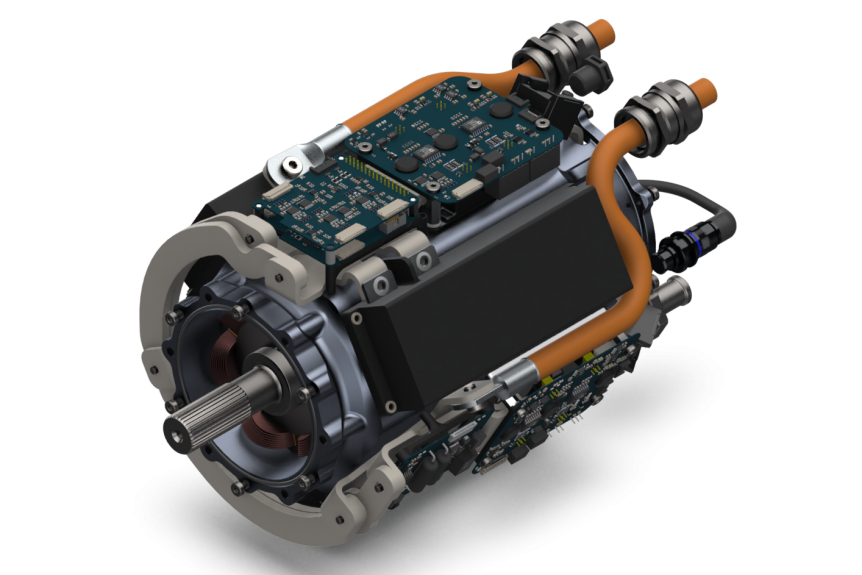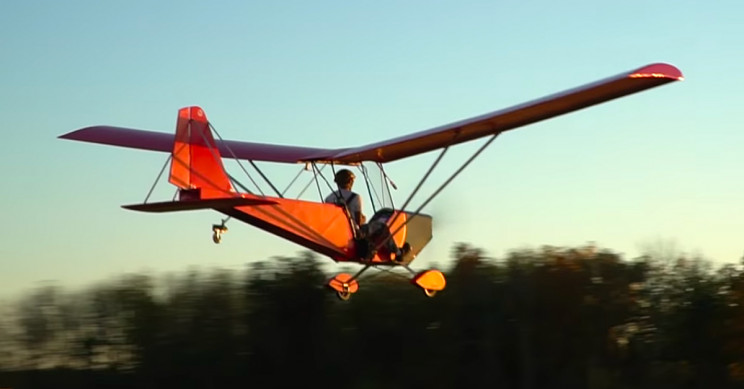Joby Aviation is one of few “unicorns” in the electric Vertical Take Off and Landing (eVTOL) market, a billion-dollar enterprise. With funding coming from Toyota, several venture capital investors, Uber and the U. S. Army, Joby seems poised to demonstrate Urban Air Mobility (UAM) in a serious way. In 2011 JoeBen Bevirt, founder of Joby Energy, Joby Aviation, and creator of those knobby-looking tripods you see everywhere, invited Patrick McLaughlin to visit his design studio. Your editor got to tag along. On Woodpecker Ridge, north of Santa Cruz, JoeBen’s barn-like studio housed about a dozen engineers and designers all working on electricity-generating kites. He wore a T-shirt reading, “If you’re not living on the edge, you’re taking up too much room.” That edginess has helped him, in the last decade to be a major player, with now over 500 employees in the aviation sector. JoeBen and Patrick discussed motor design and integration with a controller Patrick had built from off-the-shelf …
Quantumscape Batteries – an Emerging Answer
Hiding in plain site next to the San Jose, California International Airport, Quantumscape has been quietly developing a solid-state battery now emerging and trending toward mass production. With backing from Volkswagen, Bill Gates and a founding member of Tesla, the battery company would make big splash if it used a liquid electrolyte. It doesn’t. Wired goes a bit dramatic in describing the faults of batteries with liquid electrolytes. “IF ELECTRIC VEHICLES are ever going to fully supplant gas guzzlers on the world’s roads, they’re going to need an entirely new type of battery. Despite steady improvements over the past decade in the energy density and lifetimes of lithium-ion batteries, the cells in new EVs still lag behind internal combustion engines on pretty much every performance metric. Most EVs have a range of less than 300 miles, it takes more than an hour to recharge their battery packs, the cells lose nearly a third of their capacity within a decade, and …
A 5-10X Battery from Silver Oxide and Zinc
University of California at San Diego researchers headlined a report with fairly astonishing news:“A flexible screen-printed rechargeable battery with up to 10 times more power than state of the art.” Combining their science with the manufacturing expertise of a hearing-aid battery maker, they have come up with a silver oxide and zinc battery that can be screen printed in normal lab conditions. Normally, such production requires a sterile environment under vacuum. So far, the battery technology seems to be limited to hearing air-sized coin cells, or in the case of UC San Diego’s work, printable displays on wearables. On smaller scales, such batteries could be used to power Internet of Things (IOT) sensors and transmitters, alerting folks when an oven kicks on or the ketchup in the refrigerator is getting low. One big question your editor has is whether this tech can successfully make electric vehicle batteries with significantly improved power and energy density to make a difference. The jointly-produced …
Is There a Graphene Battery in Our (Near) Future?
Graphene is fascinating stuff, with tons of promise. Whether it can produce usable results for energy storage is still an open question. But Samsung and a startup called Real Graphene may have at least a start in that realm. GAC, a Chinese auto firm, seems to be promising batteries before the end of what is left of this year. There may be hope in the midst of a dark winter. Samsung’s Lagging Promise In 2017 a team of researchers at the Samsung Advanced Institute of Technology (SAIT) developed a “graphene ball,” promising a 45-percent increase in capacity, and five times faster charging speeds than standard lithium-ion batteries. Hoping to power mobile devices and electric vehicles, SAIT collaborated closely with Samsung SDI* as well as a team from Seoul National University’s School of Chemical and Biological Engineering. *Not a simple abbreviation, SDI stands for “Samsung with the initial letter S, ‘Display’ and ‘Digital’ with D and ‘Interface’ and ‘Internet Component’ with …
Russian Efly 1A Begins Flight Tests
Designing and building an airplane is a major undertaking, often taking a decade or more to complete. Aleksey Sychev has completed two airplanes and at least two motors out of three planned. Think about that – our Russian friend has built his own airplanes, motors, controllers, and battery packs. The Russian engineer and teacher has even successfully flown his Efly 1A motor glider. Aleksey recounts the day on his Facebook page. “We tested the Efly-1a motor glider. The declared characteristics were confirmed: 9 take-offs were performed on one battery charge, then 3 flights over the strip. Operating time on a single charge is 5 minutes (3 takeoff and 3 cruise modes are included). This is in numbers. There were unreal feelings. Everything was easy and harmonious, the plane seemed to be telling us: “Relax and enjoy”, and indeed, as soon as you turn on the gas, you feel the pull behind your back. No problem except for a long picnic …
Tecnam Goes Electric in Parallel and with Batteries
Tecnam, an Italian aircraft producer noteworthy for supplying the base aircraft for NASA’s X-57 Maxwell distributed electric test vehicle, has two of its own electric craft under development. One will be a parallel-hybrid single-engine/motor four-seater with perhaps the smallest motor Rolls-Royce can supply. The other will employ a battery-only system to power an 11-seat commuter aircraft. Tecnam’s history, starting in 1948, includes the design and manufacture of over 33 types of aircraft, with deliveries of over 5,500 airframes in more than 65 countries. Parallel Power Introduced in 2018, the H3PS (“High Power High Scalability Aircraft Hybrid Powertrain”) project was a collaboration among Tecnam, BRP-Rotax and (at the time) Siemens, which supplied the electric motor. Siemens’ electric aircraft division has since been purchased by Rolls-Royce, taking over the motor part of the H3PS partnership. The setup is similar to that employed by Axter Aerospace, a Spanish company, in 2015. The video presents the different modes of power available, but Creedence Clearwater …
Beam Me Up: Flying on Sunshine™
We recently reported on two electrically-powered cross-country flights for which the big issue was lack of battery-charging facilities at airports along the way. Both “teams” had their chargers carried by an accompanying airplane or automobile. Now, with a public demonstration a Beam Global charger at Reedley Municipal Airport in Fresno County, California, we see a no-fuss way to bring EV charging to aviation – even in remote locations. Beam Global premises its installations on a foursome of negatives: No permitting, no construction, no electrical work, and no utility bill. Installation, if one believes Beam’s video, is almost a non-event. Beam, formerly Envision Solar, produces pre-fabricated EV ARC solar-powered charging stations. Like a vacation camper, the ARCs can be towed right onto a level piece of property and dropped off. The units are self-contained and can produce electricity from the sheltering overhead solar panels. A driver or pilot can park on or next to the metal platform and charge their electric …
Erik, Eric, Dr. Anderson, Verdego and Hybrid Power
In a recent AVWeb Vodcast, Paul Bertorelli interviewed Embry Riddle’s Dr. Pat Anderson on the topic, “Why Electric Airplane Designers Are Turning to Hybrid Drives.” Battery energy-carrying capability has not fulfilled its promise yet, according to Anderson. The difference in energy density between fossil fuels and batteries is still too great to fulfill missions involving more than small craft and short distances for the most part. This outlook caused Dr. Anderson’s associates, Eric Lindbergh and Eric Bartsch to form Verdego Aero, dedicated initially to developing a Diesel-hybrid generator system. They corroborate Dr. Anderson’s sense of current battery technology, their web site answering “Why hybrid?” They explain, “Electric aircraft are at the forefront of aviation technology, but the energy density of current batteries isn’t yet high enough to support many mission types or aircraft designs. The power generation systems in the VerdeGo IDEP (Integrated Distributed Electric Propulsion) systems, which use Continental Jet-A Piston Engines, offer 4-8x the equivalent energy density of today’s …
H3X – A Motor with High Power Density
H3X, a motor company started by three University of Madison, Wisconsin graduates, promotes its integrated motor/inverter power plant as “the next step in the evolution of electric propulsion technology.” With Their HPDM-250’s 13-kilowatt-per-kilogram continuous power ability, it meets ARPA-E’s (Advanced Research Projects Agency–Energy’s) criteria for powering large, 737-type aircraft. Electronics Weekly reports, “ARPA-E has determined that for a Boeing 737 to complete a typical five hour flight, the propulsion system must be >12 kW/kg continuous.” H3X adds, “These specifications are estimates based on electromagnetic thermal and structural simulations. Data from dynamometer will be available Q2 2021.” Their motor is roughly twice as power dense as MagniX motors of similar power, according to H3X. Weight reduction is an intrinsic part of aircraft design. In the days of internal combustion engines (still very much with us), conventional wisdom held that reducing power plant weight by one pound could help take two pounds off the airframe. Even today, ICE engines generally produce only …
Peter Sripol’s Mk. IV is Paramotor Powered
Peter Sripol creates interesting ultralight aircraft, among other, sometimes scary projects. His latest is pulled along by a paramotor motor. Because of the small aircraft’s low and slow performance, the low-power (and very low noise) motor seems more than sufficient to the task. His fourth design, the Mk IV has no ailerons, much like an earlier ultralight, the Skypup. After initial tests showed shortcomings with the Mk. IV, quickly modified wings allowed Peter to return to the air quickly. As he explains, there won’t be plans for this airplane because it has too many not as yet time-tested innovations. The hot-wire-cut foam structure and vinyl wrapped wings are an unknown in terms of longevity, so it’s probably best to let Peter make his determination on that. Note the machine seems to be remarkably quiet, the OpenPPG motor drowned out by propeller noise. (That’s also low because of the e-Prop’s design.)* When Peter is able to shout down to his father …

